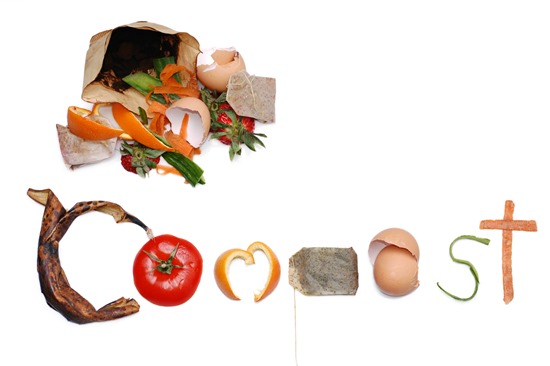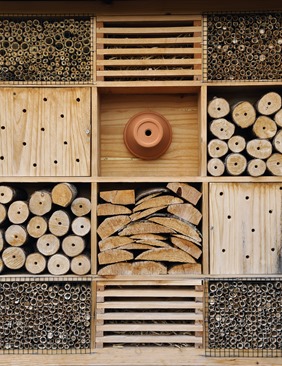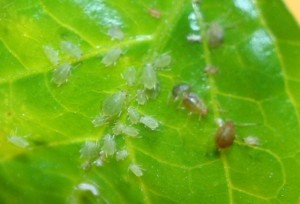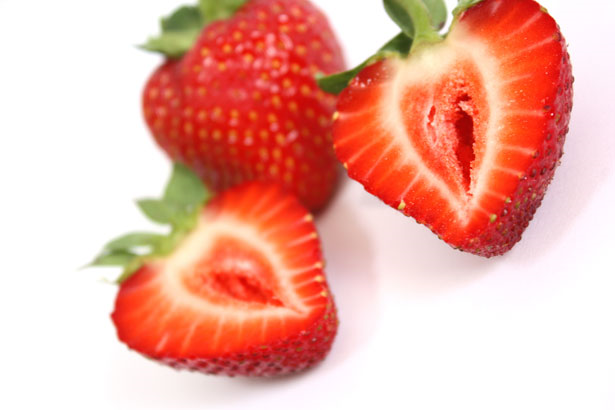5 Easy Money-saving Gardening Tips
11 years ago cheap, compost, guest post

Starting and keeping a garden is a great way to spend your time for those of you with a green thumb. I just recently took up the hobby, and was shocked at just how expensive it was to start a relatively large garden in my back yard. Undeterred by the cost, I opened my wallet, pulled out the no fee credit cards and began buying seeds, mulch, and the tools I needed to keep my garden looking great.
Make you own compost. There are two big benefits to composting. First, those scraps from the vegetables and other foods you spent your hard-earned money on don’t go to waste, allowing you to make the most of your purchases. More importantly, however, compost is free nutrient rich soil for your garden. It’s easy, too.
A very simple way to create a compost area is to choose an area of your yard that’s away from everything else and section it off with chicken wire. Once you’ve built your bin, simply toss your scraps, veggie peelings, egg shells, and more into the bin and let it decompose. Compost soil takes about a year to be ready for gardening, but once it’s ready, you’ll have some of the freshest free soil around.
Cut back on mulch. Have you laid mulch and then had pesky weeds pop up anyway? If you answered “yes,” there’s a good chance that you also purchased more mulch to lay over the invading weeds. There’s a simpler solution, however.
Next time you go to lay mulch, take some of those old newspapers out of your recycling bin and lay them flat over the area where you’re going to lay the mulch. With this biodegradable layer between the weeds and the mulch, you’ll see fewer of their little heads popping through the wood chips, and you’ll save money since you’ll have to reapply your mulch less often.
Buy self-seeding plants. Another really great way to save money on your garden going forwards is by not having to by new plants every year. Many plants – like Foxgloves, Oriental Poppies, etc. – are self-seeders. This means that as they deteriorate in the colder months, they will release seeds that will germinate when the weather gets warm again.
This is a great way to save money on your garden because it removes some of the monetary burden of purchasing all-new flowers at the start of each warm season.
Start small. One way to facilitate the lushness of your garden is to buy larger, adult plants instead of growing from seeds. Many gardening stores sell larger plants because they are more expensive to the buyer, however. To save some money this year, but smaller, starter plants or grow your garden from seeds. Seeds and smaller plants cost less because they’ve cost the growers and distributors less to grow and maintain.
For some, growing a garden can be challenging, but if you’re willing to try, going this route will save you money upfront and could very well produce just as beautiful a garden as larger plants.
Become a plant food chef. Another expense that can be very important to your garden (and its health) is purchasing plant food. Plants, like all other organisms, need certain things to thrive—water, light, nutrients, and more. And one of the ways we give plants nutrients is with expensive plant foods.
You can, however, save money on plant food by making your own. Here’s how: take compost and place it into a large container of water for a week. When the week’s up, the water should be murky and brown. That means it’s ready. Now, use this mixture to water your plants—it will work as well as store-bought foods, but will lack the chemicals found in them.
The biggest tip I can give you is to keep it small and simple until you get the hang of it. Gardening is supposed to be relaxing, not complicated. If you want complicated, try understanding section 529 college savings plans. That’s complicated. Gardening should be the opposite of that, and once you get the hang of it, it is.
Make the most of May with some quick recycling projects
11 years ago cheap, guest post, recycle

May is a great time to start enjoying the warmer weather and longer days by getting out in the garden. By taking the time to smell the roses and stroll around the allotment plot or garden you can help to combat stress levels and restore the Zen to your busy life. Discovering the plant life and wildlife using your senses will bring you closer nature. While you appreciate these little natural miracles why not give a thought to how we can help the environment at home.
While you are (hopefully) having fun in the sun you could have a go at a few recycling and repurposing activities. Here are a few tips that can help you turn your rubbish into something beautiful or functional.
1. Turn rubbish into a planter. A chipped cup and saucer, a teapot with a broken lid, a lonely wellington boot, all can be filled with compost and turned from something unloved into something beautiful. It’s true that flowers can work wonders to cheer up a dull space, all you have to do is to drill some holes in the bottom of the receptacle, fill it with compost and plant flowers or seeds. Summer bedding plants are in available at garden centers right now and can be used to add an instant impact.

2. Build a bug hotel. These can be made from all sorts of weather durable scraps of building material and garden material. The easiest bug hotel can be made from broken garden canes which are too small for anything else. All you have to do is chop them up into similar lengths and tie them together with twine and leave it in a quiet corner of the garden. Bugs, insects and even bees will crawl in to this safe place during bad weather and frosts.
3. Make use of kitchen scraps. Slugs are a gardener’s public enemy number 1, use broken eggshells or anything prickly (holly leaves work well too) scattered around your most precious plants to deter the slimy horrible critters from munching their way through the irresistible fresh new shoots. Other kitchen scraps such a vegetable peelings can be added to the compost where they will provide valuable nutrients and help improve the structure of the soil.
4. Use finished water bottles. Empty water bottles are one of the world’s biggest recycling problems but there are so many uses for them around the garden. In May when frosts can still happen, water bottles filled with water can be used to protect courgette plants. By filling up the bottle with collected rain water and then placing the bottle (or 2 of them) next to your courgette plants you can provide extra warmth during the last frosts. The water in the bottle will warm up during the day in the sun and then cool down slower than the air at night, thus keeping your plants toasty should a frost happen. Used water bottles can also be made into slow release drip feeders which will make efficient use of water as none runs away from its intended destination.
With so many ways to recycle you need never look at your rubbish in the same way again!
This article is a guest post from Dan Whiteside, Dan blogs about DIY and gardening topics at DIY Newbie, where he discusses a variety of issues including plumbing repairs and building projects.
Gardening Novice
11 years ago guest post, outdoor seed starting

My ancestors were German farmers, but somewhere along the way the green thumb gene got spliced out of me. Despite enjoying an abundance of homegrown green peppers, squash, and tomatoes in my youth, I never seriously shadowed my grandparents nor my mother in the garden.
My youthful experience gardening involved one sad attempt at growing carrots from seedlings, an endeavor so fraught with impatience I harvested little orange worms (they do not deserve to be called carrots) no bigger than a pinky toe. I hung up the trowel and spade after that attempt, and determined that all of my future vegetables would be store bought and enjoy endless refrigeration in a yard-free condominium.
However, each summer as the sun grows warm I miss the fresh taste of garden tomatoes. I also, inexplicably, long to get dirt beneath my nails. I have recently become very aware of sourcing food locally, and it seems to me there is no better local source than my own backyard.
There have been many stumbling blocks to garden domination.
1. Soil. It turns out that soil is very important to the success of your garden. Too dense (like the clay-like mud of our yard) and plants don’t have room to grow or absorb nutrients. Too loose (loamy) and the beds won’t retain sufficient amounts of water leaving your plants thirsty. Talk to your local nursery about the local soil. My guy was very helpful in setting me up with some soil to supplement and loosen up our existing dirt. If you are looking for a cheaper, more green alternative to purchasing soil from a nursery composting is a good option. We got a late start on it this year and therefore went the lazy route, but I am eager to use compost in our garden next year.
2. Space. While I did not end up in the full-service penthouse condominium of my dreams, our yard still presents special challenges. We’ve opted to use square foot gardening techniques to organize our garden. Some plants will take up a single square foot of space, and other plants like the zucchini take up four or more spaces on the grid. Since most of our seedlings started out the same size, using this square foot method helped ensure we buffered each plant with enough room to grow.
Additionally we are experimenting with other space savers like vertical gardening and upside down planters. So far we have had mixed success due in part to poor planning (Who knew the garage cast that large of a shadow in the afternoon while we are work?), but ultimately we look to have an interesting and robust crop coming.
3. Cost. Free vegetables aren’t free. We thunked down a healthy amount of start-up cash to get our garden going. Lumber for raised beds, soil, and even the seeds and plants themselves set us back a little more than we anticipated. However we built the garden for longevity and hope to reduce our costs next year. Additionally. we have taken the garden beyond just the edibles and taken tips from www.texaselectricityproviders.com to improve our landscaping to reduce home energy costs. Ultimately, knowing exactly where our food is coming from carries more value than the few extra dollars invested this year.
I am excited to see if I have reclaimed my heritage come harvest. I hold out hope that if I squint at in the right light (and rub some freshly cut grass on it) my thumb will reflect a healthy green hue.
Keeping Your Garden Insect Free
11 years ago aphids, guest post, pests
Nothing is tastier during the summer than home-grown vegetables. Unfortunately, insects feel the same way and often destroy vegetable gardens in short amounts of time. To prevent these pests from reaping the benefits of diligent gardening, consider the following tips.
Plant transfers early. While it may be somewhat risky in cooler climates to plant early, this practice can prevent initial pest problems. Insects are not as common during the earlier months, so this is the perfect time to get a head start on a healthy garden.
Keep the garden cultivated and weeded. Healthy soil is a great contributor to pest prevention. Organic mulches often attract insects, so try to avoid these. Weeds should be removed regularly. It is also helpful to add fertilizer frequently and ensure the soil stays moist.
Keep crops covered. Plastic mesh is useful for keeping common insects away, and it is an affordable prevention method.
Plant insect-resistant produce. Some types of vegetables and herbs are naturally unattractive to pests. It is also helpful to rotate crop planting locations by avoiding planting the same families in the same areas for three years. This will lower the risks of damages from overwintering pests living in the soil.
Use pesticides or pest-specific control methods. Both organic and commercial pesticides can be harmful if they are not washed off before consuming produce. However, they may be necessary for keeping certain insect populations under control. It is best to avoid using pesticides that kill both harmful and beneficial pests. Whenever possible, use a pesticide that is only targeted at a specific problematic insect. The following tips are also helpful for preventing specific pests:
- Grow chives, mint or basil to keep aphids away.
- Put crushed eggshells around the bases of plants to prevent snails and caterpillars.
- Use a repellent with eucalyptol to discourage mosquitoes.
- Grow thyme, dill or cilantro to keep leafhoppers control.
- Grow garlic, catnip or yarrow to prevent potato beetles.
Pest problems are not always limited to insects. In addition to these measures, install some chicken wire or mesh fencing around the garden to keep rabbits and other rodents out. Each of these prevention methods are affordable and easy, so they will work for any budget and skill level. And of course, if all else fails, there is always the option to call a pest control professional. Most companies have proven methods and systems to both exterminate pests and ensure that they don’t return.
Growing Fruits in Small Spaces
11 years ago blackberries, fruit, guest post, raspberries, strawberries
Are you planning a garden this year? If so, you are in good company. Over 50 million American households will be growing some or all of their own fruits, vegetables, herbs, or berries. Plant nurseries, garden centers, farm supply and home improvement centers have all noticed an uptick on sales of seeds, plants, seedlings, Fruit Plants, fertilizers and gardening tools this month.
So many people have taken an interest in gardening that even people who live in apartments, condos and houses with small yards can satisfy their urge for a green thumb. You do not need large plots of land to be a gardener. Patios, balconies and tiny back yards can be decorated with flowers, herbs, vegetables and fruits – thanks to container gardening and new types or varieties of plants. Community gardens are another way to find the space needed to grow your own fruit and vegetables.
Benefits of growing your own produce include:
- improved quality,
- better taste,
- guaranteed freshness,
- bigger variety of choices,
- control over the use of pesticides and chemicals, and
- average cost savings of about $500 per year!
If you have the urge to try your hand at growing your own produce, consider starting out with some inexpensive container plants. Everyone has seen the TV commercials for kits that hang from the roof or a shepherd’s hook to produce fresh strawberries and cherry tomatoes. But container gardening can go much farther than that.
Suburban and urban households – even many retirement village and nursing home residents – can join in the fun of watching fruit plants and vegetables grow, and then harvest them at home. You can buy seed packets or young seedlings that were started commercially for harvesting in late summer and early fall, or try for years of production and harvesting by planting dwarf fruit trees.
Small spaces can use:
- Window boxes
- Trellises
- Hanging baskets
- Raised beds in a variety of sizes and shapes, and
- Thousands of types and sizes of pots
to help grow a variety of fruits and vegetables on patios, balconies and in small yards.
Fruit trees designated as appropriate for your growing region will be disease resistant and tolerant of the climate in your area. Citrus trees do well in Florida, along the Gulf Coast and throughout California. Blueberries and cherries do well along the East Coast and mild climate zones. Apples come in dozens of varieties. Both apple trees and pear trees can be found in every state of the continental U.S. For container gardening, there are dwarf versions of dozens of types of fruit trees.
To start your successful container gardening, community garden or home vegetable garden project, find good internet resources to research want you hope to grow, and talk to local nurseries and orchards about the types of plants and trees that will work for your climate and site. There are many decisions to make early, including:
- preparation of area: tilling, testing and adjusting the pH balance, and spacing
- type of fruits and vegetables: bush plants versus pole or trailing plants
- variety/rootstock combination: dwarf trees, hybrids, grafted twigs, crossbreeds, etc.
- recommended planting techniques and timing,
- pruning, thinning, training,
- nutrition
- disease and pest control
Check back later this summer for pictures of my own container plants!
Romantic Garden Date
11.1 years ago guest post

If you’re looking for something romantic to do with your sweetheart and have run out of ideas, try gardening together. Gardening has become one of the most popular ways couples spend time together because it brings you together while giving you something to show for it with lasting effects.
There are a few ways you can do it to make it work best for you. If you want to work on a single patch of yard together, it can really give you a lot of time together as you regularly make trips out into the garden. Likewise, if you’d rather you both have your own separate plots, it could turn into a fun game.
Before you start, take a look at an online floral site to see what awesome finds you can grab. If you’re careful, you can re-plot pretty much anything you buy and barring that, you might be able to take the seeds or stems and try to grow something completely new. Having a ton of great flowers and plants around will also give you guys the motivation you need to keep up with your garden in the long term.
The fun part about gardening with your significant other is that it’s a great way to get your creativity going and spend time together while you’re doing it. As you go through your options to figure out what compost you’re going to use or what different types of plants you’re going to grow, you’ll be able to bring together your personalities and get closer to one another in the process.
The best part about this romantic endeavor is that if you’re planting flowers, you’ll never be on short supply for those spur of the moments when you want to do something sweet for your partner. Not only are these flowers available at all hours of the day just by walking outside your backdoor, but they’re quite more meaningful when they’re something that you’ve both cultivated together. And of course they make great décor.
If you decide you guys would rather grow vegetables, it can still be just as romantic as growing roses or tulips. When the spring time rolls around, you’ll be able to harvest what you’ve grown and put them into meals pretty regularly. Not only will this be healthier, make you feel great for having achieved something, and give you a ton of bragging rights with the neighbors, but it will also give your dinners a little extra something they may not have had before.
Romantic Idea: Try planting both flowers and vegetables. Then every once in a while, have a romantic night in where you use the flowers from the garden as a beautiful centerpiece while you eat dinner with the vegetables you’ve grown. You’d be amazed at how much of an impact this will make with you two knowing that you’re enjoying something you guys worked hard on together.
Gardening is one of the best ways to spend time with your significant other without needing to leave the house and you’ll be able to have a fun project with it that will have lasting benefits. No matter what you decide to grow, it will be something that both of you made together and when you’re able to enjoy it, it will bring you guys closer than you were before.




